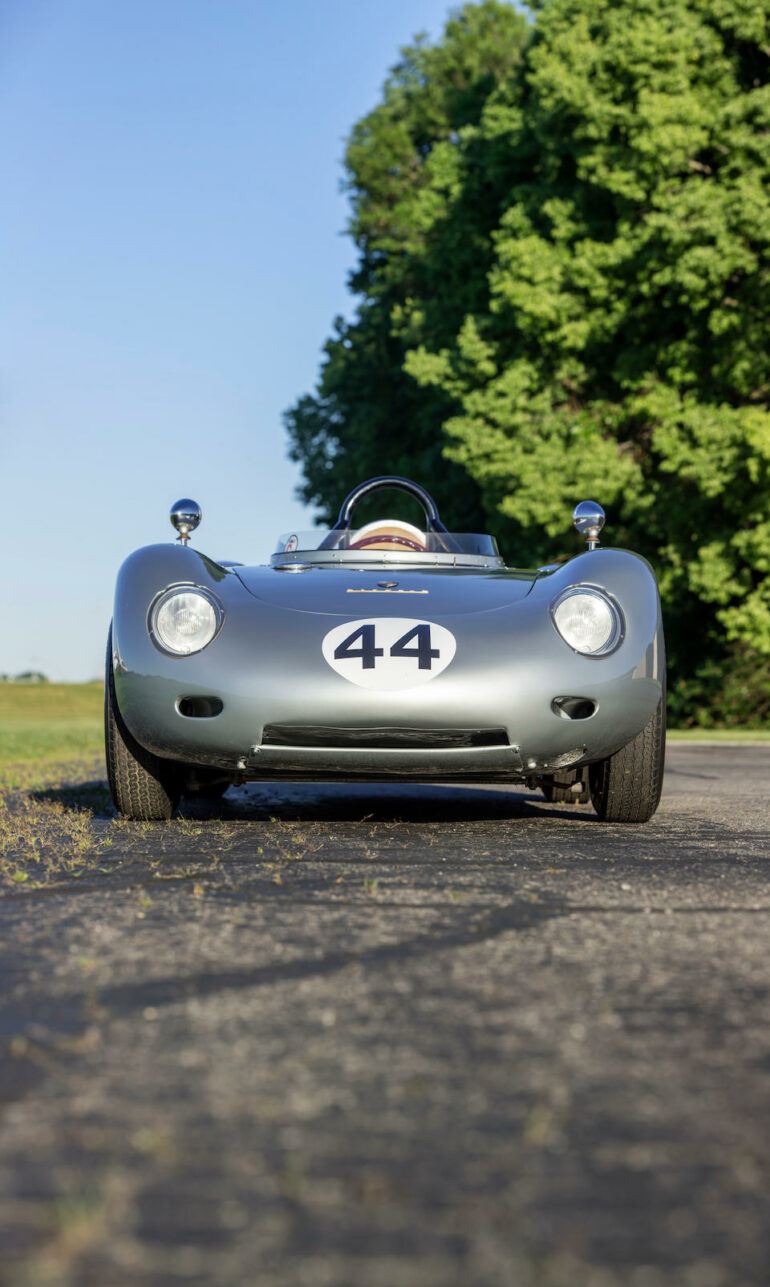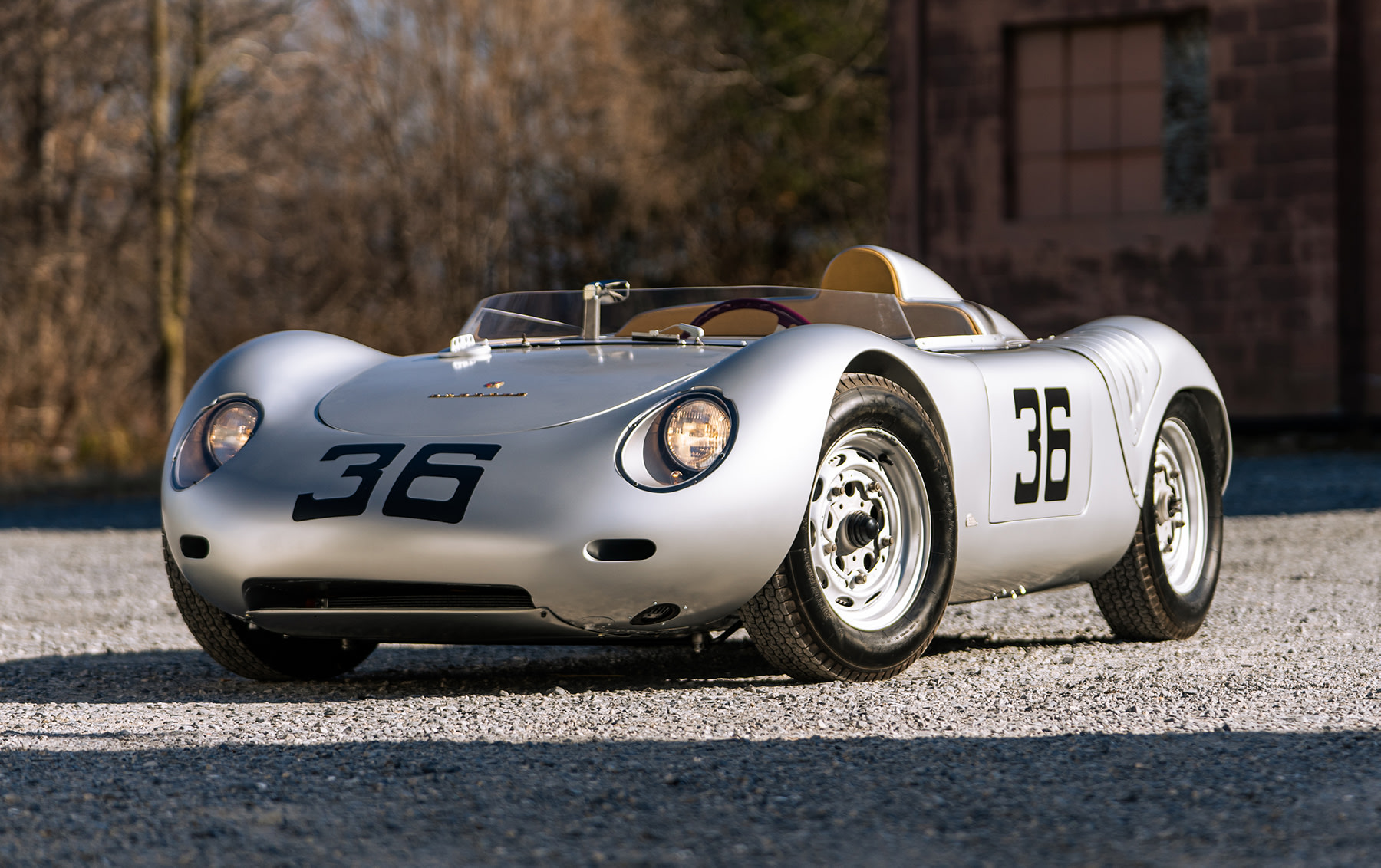Porsche 718 Rsk Mittellenker (1958)
Share
Porsche 718 RSK Mittellenker (1958): The Legend of Porsche’s Racing Heritage
The Porsche 718 RSK Mittellenker, manufactured in 1958, is a remarkable automobile that has left an indelible mark on automotive history. This lightweight race car not only epitomizes Porsche's engineering prowess but also encapsulates the spirit of competition that has made the brand a household name in motorsport. In this post, we will explore the history, design, engineering, and significance of the Porsche 718 RSK Mittellenker, along with stunning images that showcase this automotive masterpiece.

The Evolution of the Porsche 718
The Porsche 718 lineage began with the Porsche 718 RSK, a development of the earlier 550 Spyder. In 1958, the 718 RSK Mittellenker was introduced with significant innovations. The term "Mittellenker" translates to "mid-engine," highlighting one of the most prominent features of this model—its mid-mounted engine, which provided improved balance and handling. This setup allowed the car to be agile and responsive on winding tracks.
Design and Aesthetics
The design of the 718 RSK Mittellenker is an artistically aerodynamic masterpiece. The car features a sleek, elongated silhouette that reduces drag and enhances speed. The bodywork is composed of lightweight aluminum, which contributes to its impressive performance on the race track.

The signature round headlights and elegant curves reflect the essence of 1950s automotive design, combining style with function. Its minimalist cockpit is driver-focused, boasting clear instrumentation and controls designed for racing.
Engine and Performance
At the core of the Porsche 718 RSK Mittellenker lies a robust flat-four engine, specifically a 1.6-liter unit that produces around 130 horsepower. This power, combined with the car's lightweight construction, allowed it to accelerate swiftly, achieving a top speed of nearly 140 mph.

The car's handling dynamics were further refined by its independent suspension and disc brakes, which provided exceptional stopping power. The combination of these engineering feats made the 718 RSK Mittellenker a formidable competitor in various racing events, including the iconic 24 Hours of Le Mans.
Racing Success
The Porsche 718 RSK Mittellenker became a force to be reckoned with in motorsport. It was particularly dominant in endurance racing, often outperforming its rivals through a combination of speed, agility, and reliability. The car scored numerous victories and podium finishes in various races, contributing to Porsche's growing reputation as a leader in performance engineering.

The success of the 718 RSK Mittellenker solidified Porsche's presence in racing and earned them valuable lessons that would influence their future models.
Cultural Impact and Legacy
The 718 RSK Mittellenker is not just an engineering marvel; it also represents a significant chapter in automotive history. Its heritage has influenced countless racing enthusiasts and collectors alike, with examples of the Porsche 718 RSK highly sought after in the classic car market.
The car has appeared in various films, automotive exhibitions, and shows, showcasing its timeless appeal. It is often regarded as a symbol of Porsche's commitment to performance, innovation, and the racing spirit that has captured the hearts of car enthusiasts worldwide.
Conclusion
The Porsche 718 RSK Mittellenker (1958) remains a celebrated part of Porsche's racing legacy. Its stunning design, powerful performance, and iconic status make it a true automotive legend. As we look back at this remarkable vehicle, we are reminded of the incredible impact it had on Porsche's journey in the automotive world.
Whether you're a long-time Porsche enthusiast or new to the brand, the 718 RSK Mittellenker is a captivating story of engineering excellence and racing heritage worth celebrating.
